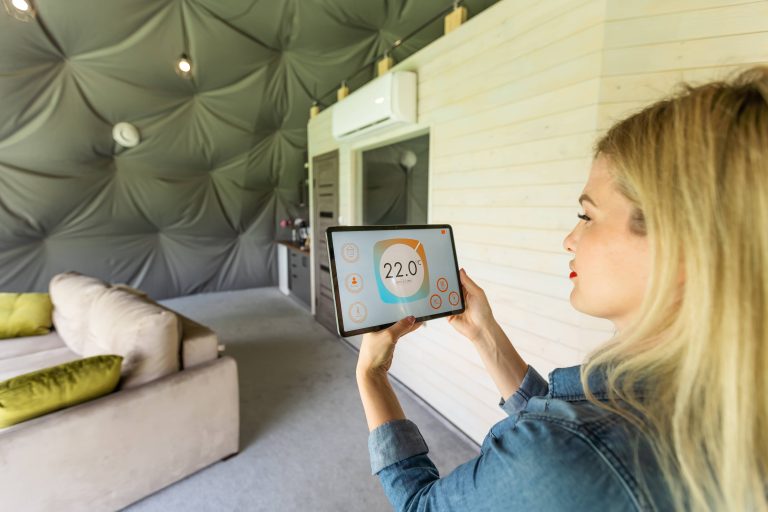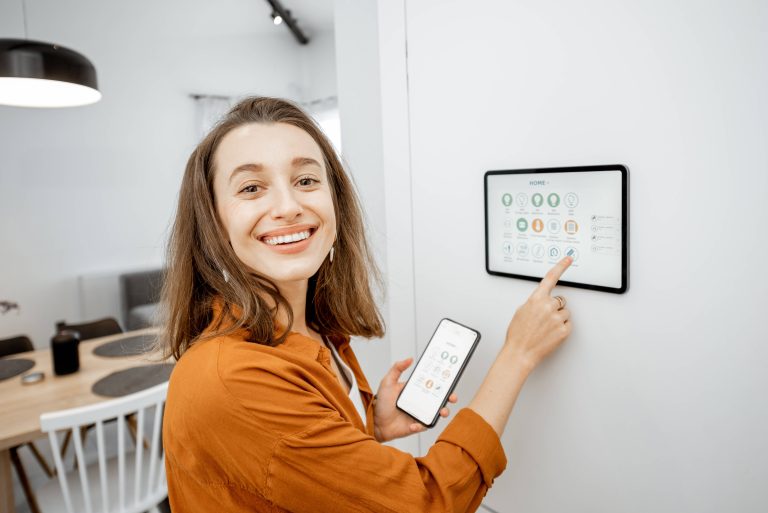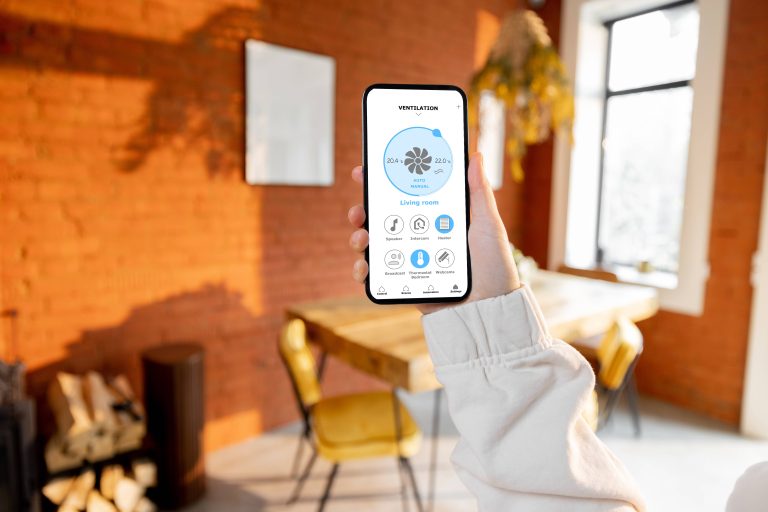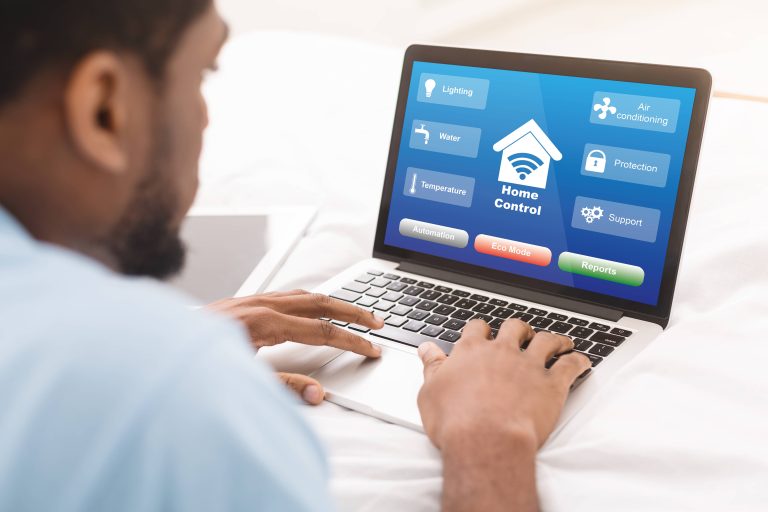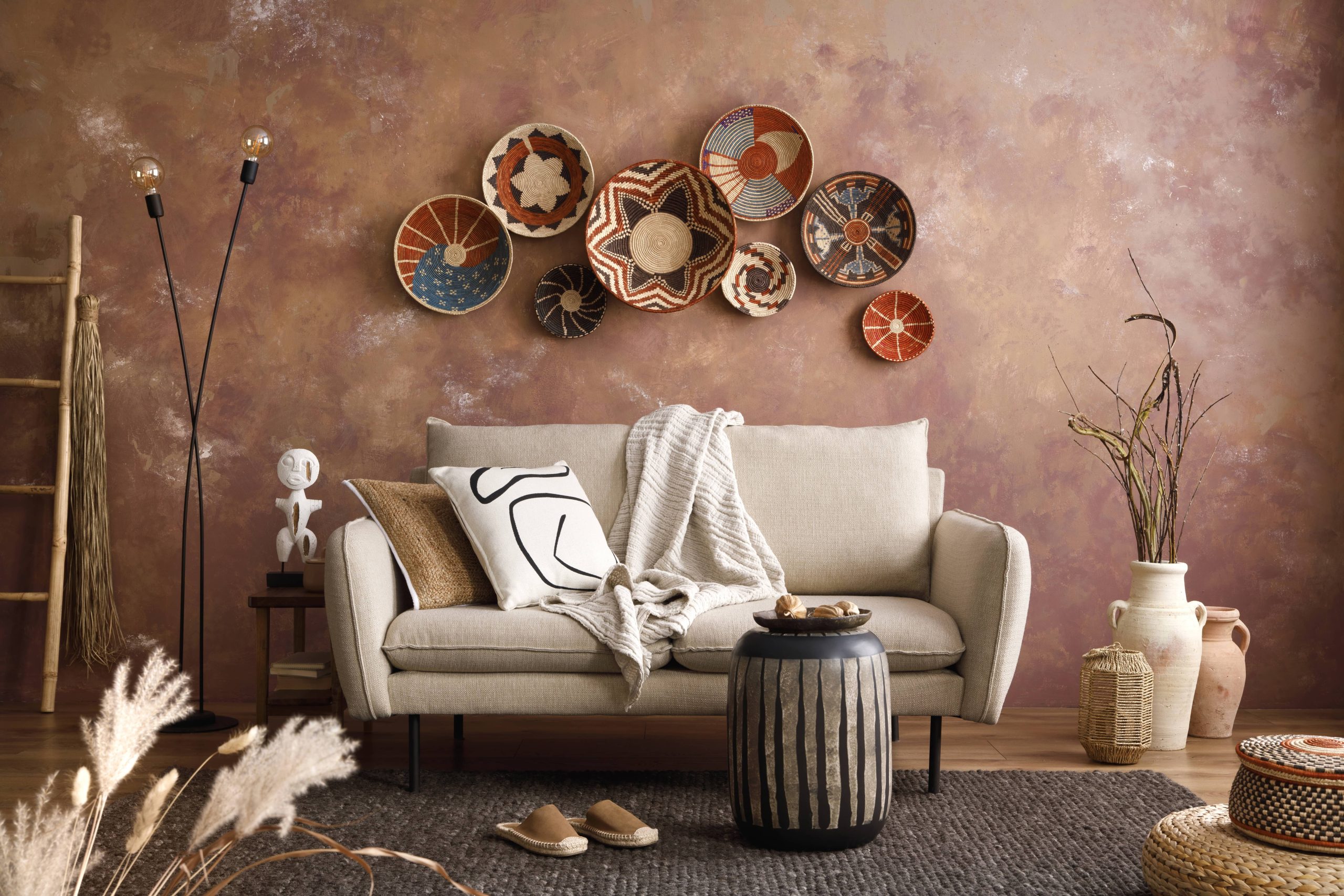
In the rapidly evolving world of home design and decor, incorporating technology into your living space isn’t just a trend but an essential element for creating a functional and modern home. Technology doesn’t mean compromising on aesthetic beauty or homey warmth. Quite the contrary, when done right, tech enhancements can add new dimensions of comfort, convenience, and safety while maintaining – or even enhancing – the visual appeal of your interiors. Let’s explore how you can seamlessly integrate technology into your home, ensuring that it complements rather than competes with your decor.
1. Smart Home Systems: The Brain of Your House
Smart home systems act as the nerve center of your modern abode. With hubs from providers like Google, Amazon, or Apple, your ability to control lighting, climate, security, and even entertainment systems from a single device is unmatched. These systems not only enhance convenience but also add a layer of safety and energy efficiency to your home. Imagine adjusting the lighting to a cozy, dim setting for movie night or having the thermostat automatically lower the temperature while you’re away – all effortlessly managed via an app or even with a voice command. Strategically placing voice assistants, like the Amazon Echo or Google Nest, requires minimal space and offers maximum utility and style.
2. Lighting Automation: Setting the Perfect Mood
Lighting has always been a powerful tool in interior design. Today’s tech-savvy homeowners can install smart bulbs and fixtures that are not only energy-efficient but also offer a spectrum of customizable options. Smart lighting solutions such as Philips Hue and Lifx can adjust in brightness and color temperature, setting the perfect ambiance for any occasion. For example, cool blues and whites can invigorate a home office during the day, while soft, warm tones can transform your living room into a relaxing retreat in the evening. Lighting can be programmed or controlled via smartphone apps, ensuring your home’s aesthetic is both beautiful and practical.
3. Entertainment and Audio: Beyond the Basics
Long gone are the days when a bulky television or tower speaker system would dominate a living room. Modern home entertainment systems have transitioned towards sleek, minimalist designs that can be seamlessly integrated into your decor. Wall-mounted televisions, projectors, and surround sound systems can be installed to maintain a tidy, unencumbered living space, while smart speakers can be subtly incorporated into bookshelves or other unobtrusive areas. Streaming devices and smart TVs offer not only seamless integration with smart home assistants but also enable minimalistic, remote-less approaches that reduce clutter and enhance the visual appeal.
4. Thermostats and Climate Control: Smart and Efficient
Incorporating a smart thermostat, like the ever-popular Nest or Ecobee, goes beyond just adjusting temperature settings. These devices learn your routines over time, automatically adjusting settings for energy efficiency without compromising comfort. Zone-specific climate control can be established using smart thermostats in combination with additional smart sensors, allowing for tailored microclimates in every room of your home. This adds a sophisticated touch, reducing energy usage while maintaining a perfect atmospheric balance throughout your house.
5. Security Systems: Peace of Mind with Style
The integration of smart security systems provides both safety and sophistication. Modern security cameras, doorbell cams, and keyless entry systems keep a low profile and boast elegant designs, ensuring they don’t distract from your home’s overall aesthetic. Moreover, they can be linked with smart home systems for an all-encompassing security network managed from the convenience of your phone or through voice commands. Brands like Ring and Arlo offer streamlined, user-friendly interfaces, providing peace of mind without sacrificing style.
6. Office and Study Spaces: Smart and Ergonomic Choices
As remote work becomes more prevalent, the demand for tech-integrated workspaces within the home has risen sharply. Ergonomically designed furniture that incorporates wireless charging and cable management systems supports a clutter-free, efficient environment. Consider desks with built-in USB ports or chairs designed for long hours of comfort and support. Smart lighting and soundproofing can enhance productivity and focus, allowing you to create a professional workspace optimized for modern needs.
7. Kitchen and Bathroom: Not-So-Hidden Technologies
The heart of any home, the kitchen, and the sanctum of relaxation, the bathroom, are both prime candidates for subtle technological integration. Smart appliances, such as refrigerators with family hub functionalities, can help streamline daily tasks, while smart faucets and mirror displays in bathrooms offer practical benefits paired with a touch of luxury. Induction cooktops with precise cooking features or voice-activated microwaves blend seamlessly into sleek, modern kitchen designs, enhancing functionality without sacrificing aesthetic appeal.
8. Sustainability through Technology: A Greener Home
Beyond individual gadgets, incorporating technology provides an opportunity to pursue sustainability – a critical component of modern decor. From smart irrigation systems for your garden to solar panels integrated into your roof design, these advancements help reduce your carbon footprint while keeping utility costs down. Living in harmony with nature and technology, sustainable smart homes offer innovative solutions to preserve resources while enhancing the comfort and style of your interiors.
Conclusion: Balancing Tech with Aesthetic Harmony
The idea of integrating technology into your decor may initially seem like the introduction of incompatible elements. However, through thoughtful placement and selection of elegant designs, technology assumes a natural role within your decor scheme, serving both functional and aesthetic purposes. It all comes down to choosing the right tech that suits your lifestyle, meets your needs, and complements the visual narrative of your home. Smart homes aren’t about having more gadgets; they’re about a cohesive, harmonious system that supports and enhances your lifestyle. Embrace the balance that technology offers, and let your home become a glowing example of innovation and design working hand in hand.

